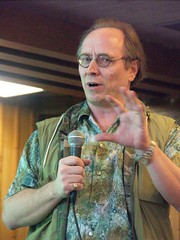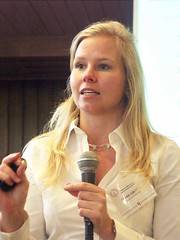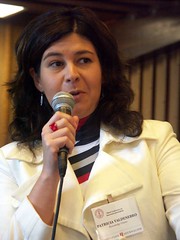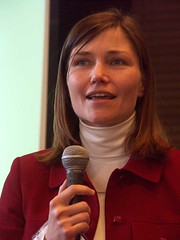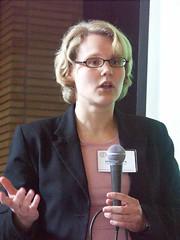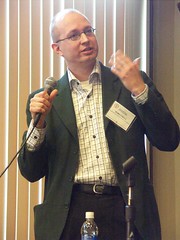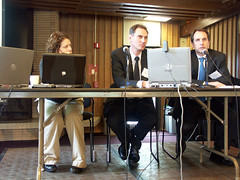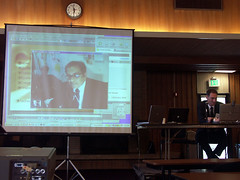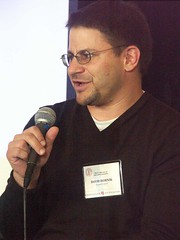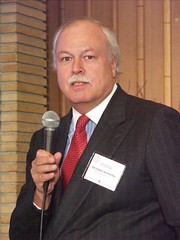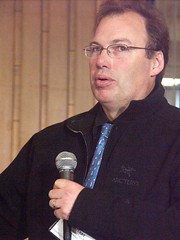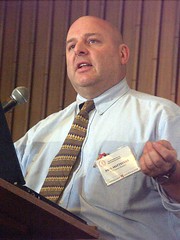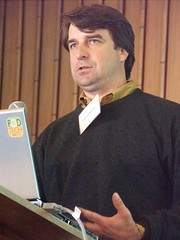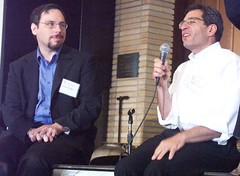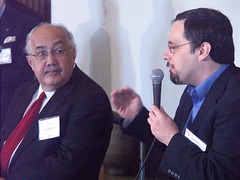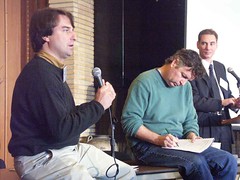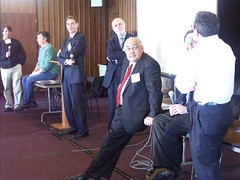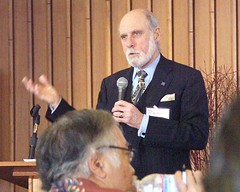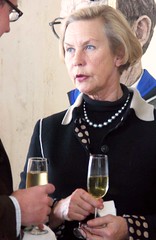
“A Panel Discussion on the Future of Newspapers” at The Commonwealth Club of California in San José yesterday. You’ve seen the title before on seminars and speeches: Will Internet kill newspapers?” But I thought I’ll give it a try. The panel discussion was quite interesting, even though I’ve heard the same questions and answers many times before. And I also had the same agreements and disagreements.
Peter P. Appert, analyst at Goldman Sachs, Jerry Ceppos former News Editor at San José Mercury News, Joan Walsh from Saloon.com and Dan Gillmor discussed the topic together with Jim Bettinger Director at Knight Fellowships Program, Stanford.
I definitely agree with Peter Appert: There will still be a paper on your doorstep tomorrow and the next week. It’s all about finding the “new” business model for printed news.
It’s interesting to note that we had the same discussion in Sweden some years ago. Disregarded that newspaper reading are unproportionally high in Sweden, Swedish newspapers already have started to adapt to the Internet. And new printed ones have emerged. For example Metro (
U.S. version. The original
Swedish version) is a hugely successful Swedish printed newspaper innovation, with a
completely new business model. It’s available for free at local public transport designed to be read the average time it takes to commute from the suburb to work. Today it’s the largest Swedish daily.
An interesting side effect with Metro is that young people’s knowledge of contemporary life and events has been notably better the last years in Sweden. They read Metro.
Internet it more threat against television. Internet ad revenue is rising, but TV commercials are declining. And ads in printed media is rising, especially job advertisements. (Statistics:
The Swedish Newspaper Publishers’ Association)
I had a chat with some writers at the San José Mercury News, that’s up for sale. They were promoting to “preserve the paper’s quality journalism and civic commitment to the community.”
http://www.savethemerc.com/ I like the Merc even though I worked at the Chronicle.
Personally I like news papers for what they do, not what they are. And I would like to add what I learnt from Ken Howe, my old Business Editor at the SF Chronicle, “It’s called newspaper, not oldpaper!”
Some interesting quotes:
“More outlets doesn’t mean more news.” (Joan Walsh)
“We have to think of ways to make newspapers essential again, and they might not be newspapers.” (Joan Walsh)
“Newspapers are in the 24 h cycle manufacturing business, not the news business.” (Dan Gillmor)
“Most blogs are conversation, not journalism, so don’t sweat it. Factual errors can be fixed quickly. Citizen Journalism doesn’t mean that everyone’s a journalist; it means that some people from time to time, ‘commit an act of journalism’.” (Dan Gillmor)
“Blog is just a proxy word for “doing things ourselves.” Ninety-five percent of everything (not just blogs - everything) is crap. How do we surface the really good stuff?” (Dan Gillmor)
“The Tom Paines of tomorrow are probably going to be doing it with video” and other forms that are native to the next generation of mediamakers” (Dan Gillmor)
Full report at
Ryan Sholin's J-School Blog.







